Some people have had broken scopes using the 2nd generation, some people have had scope slippage using the 1st generation of these mounts. So, let's take a look at them.
The 1st generation mounts suffered from a lack of absolute repeatabilty, which we corrected with our "Accurized" version.
The 2nd generation increased the diameter of the pins (from around 0.237" to 0.257") where the top section of the mount slides on as a means to overcome the lack of "register", and added a very viscous lubricant in order to provide some "dampening". Sadly, these improvements have proven fatal flaws.
The mounts can become so hard, that they do not eliminate ANY recoil, acting more like solid mounts than like floating mounts.
And this is the operative word: Float.
If you look at our High Speed Analysis of How ZR Mounts Work, you can see that what in effect happens is that the initial REARWARD recoil originated by the spring pushing the piston forward separates the floating section from the fixed section of the mount. This separation enables the piston to end its race towards the end of the compression chamber and the pellet to exit BEFORE the scope is affected. In other words, by the time the FORWARD recoil that kills scopes begins, the scope is not in a rigid relation to the bottom section of the mount. Therefore, the lower section of the mount CANNOT transmit the FORWARD recoil generated by the piston's race coming to an end. And so, the scope is saved from the brutal forward recoil.
Let's take a second first to think about what a recoil is.
In essence it is a force, but forces by themselves seldom break things. Even a china cup can bear enormous weights (forces) as long as the stress comes to the cup in a slow and constant manner.
What breaks things, in reality is when one section of that thing undergoes one acceleration while another section undergoes a different acceleration.
That is why destructive forces are measured in "g"s.
Of course the quantity that relates forces and accelerations is the mass (usually constant), so heavier objects suffer more from the same "g"s than a lighter object.
Sometimes people tell me that their rifles (specially the NP's) do NOT have a forwards acceleration. And some videos tend to show that NP's recoil BACK but suddenly stand still. There seems to be no apparent movement FORWARD.
What we tend to forget is that once an object starts moving, according to the Newtonian laws prevalent in OUR world, that object should keep on moving in the same direction and at the same speed that it was.
IF that object suddenly stops, it can only stop because a force, a "g times X" has acted on the object.
So, those NP's that SEEM to have no forward recoil because they do not feel to jump forward, may have a quite appreciable forward recoil; at least enough to stop the rifle, scope, and shooter's arms in its tracks once they had started to move to the rear.
But coming back to the ZR mounts our problem is HOW to look into how effectively the mounts isolate the scope from the rifle's recoil.
Someone suggested getting some accelerometers and instrumenting a scope. Sadly that is an economical hurdle we cannot overcome, BUT in the discussions that ensued, my Brazilian friend said something, ALMOST, tongue in cheek that clicked in my head; he said "if the recoil felt by the scope was Zero, then the scope could be simply lying on the mount and it should not move".
Hmmm, interesting point of view. Of course, even though the mounts are called ZR (zero recoil), it does not mean ABSOLUTE ZERO. The rifle moves, therefore the scope needs to move a little. We cannot simply put a scope in the bottom rings and expect it not to move. NOTHING is absolute.
BUT, some tests could be performed by starting at a VERY LOW torque of the rings' screws and increasing the torque till the scope did not move.
And that was the start of it! LOL!
Since I am working on creating a "Universal Rifle" that will do everything a reasonable airgun can do, I had ahead of me a torture test of some components inside the gun ("torture test" for CCA means 300 shots fired over the course of a morning, or afternoon, about 4 hours). We have found that components that survive this test usually survive well into years of common usage by FT shooters and that means decades of usage by hobby airgunners. So, it is our standard test of "endurance".
And I thought I would use the opportunity to test the idea: Start with the LOWEST setting on a torque wrench (in this case, the 10 in-lbs. setting has been calibrated by the manufacturer to be in reality 10.4 in-lbs), and shoot a lot with the ZR mounts in a D54 and see if the scope crept in either direction. IF the scope crept I was prepared to go to 12½ in-lbs and see if it crept; if it crept, then I would go to 15 in-lbs. and see what happened there. Since 15 in-lbs is what "economy" scope makers think is the max they want their scopes torqued to, I would stop there for public consumption, but I would test at 20, 25, 30 and 35 in-lbs, which is the value that good scopes can take (on metric mounts with 3 mm's screws).
So I gathered all the necessary equipment:
I degreased ALL mating surfaces with Lacquer Thinner:
DISCLAIMER.- Newer scopes have finishes that are not as resistant, so do NOT use lacquer thinner, but use rubbing alcohol to degrease instead.
Set my FAT wrench to the 10 in-lbs value planned:
IF a freely sliding ZR Mount locks, SOMETHING IS WRONG. Back off and analyze calmly what may be wrong. The Gen 1 ZR mounts slide freely, the Gen 2 need complete disassembly, then cleaning with Lacquer Thinner, and then you're back to a "functioning" ZR mount.
Anyway, continuing:
After ALL the screws have been snugged down EVENLY, then you start torqueing the screws into place:
And when the wrench "cracks", go back two or three times around all the 8 screws to make sure that you have not missed or stressed any screw above any other.
After I finished torqueing all the screws to the LOWEST setting possible, I made two "witness marks" in the scope with white grease china marker:
After the first 10 shots, nothing had moved.
After the first 50 shots, nothing had moved.
I stopped worrying and proceeded with the 300 shots test, this is the result:
We can, therefore, safely conclude that ZR mounts, when properly setup, DO work.
I cannot stress enough that in airgunning what seems simple is, usually, an illusion.
The most basic things like tightening a screw can have repercussions in how the whole system behaves.
That is why there are a LOT of "EXPERTS" out there, but very few Pros.
Anyway, I hope this helps in making a good idea more functional to the majority of shooters.
Keep well and shoot straight!
Héctor Medina
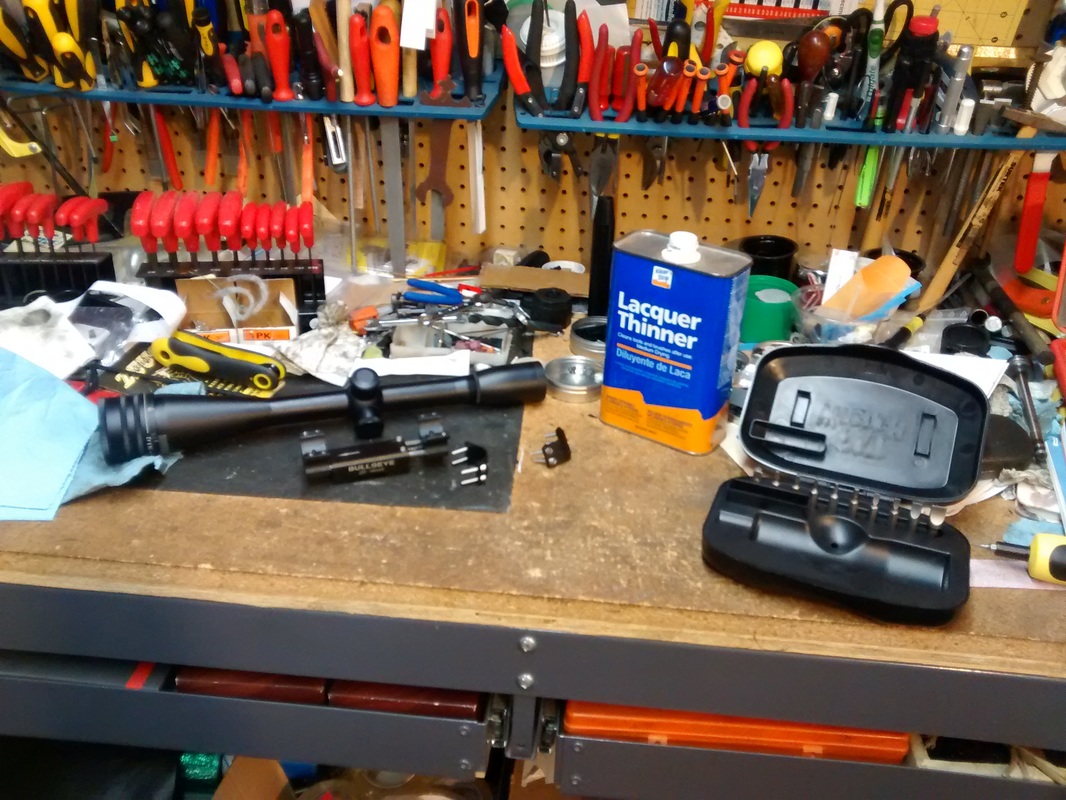
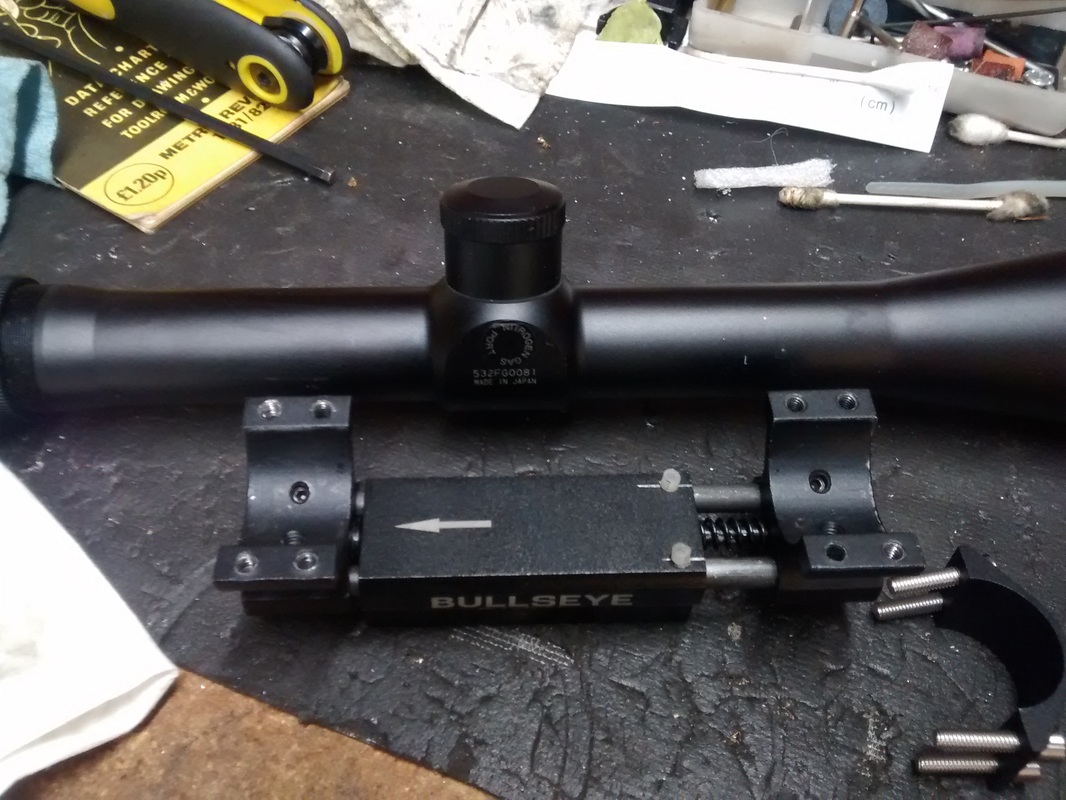
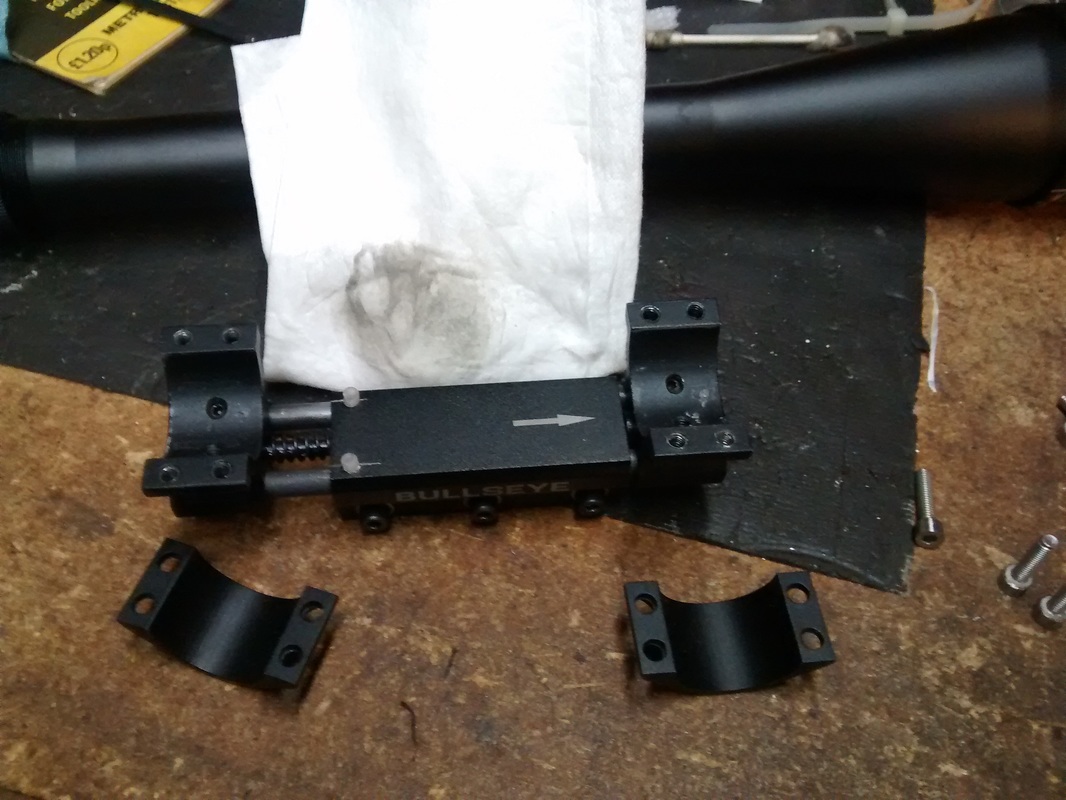
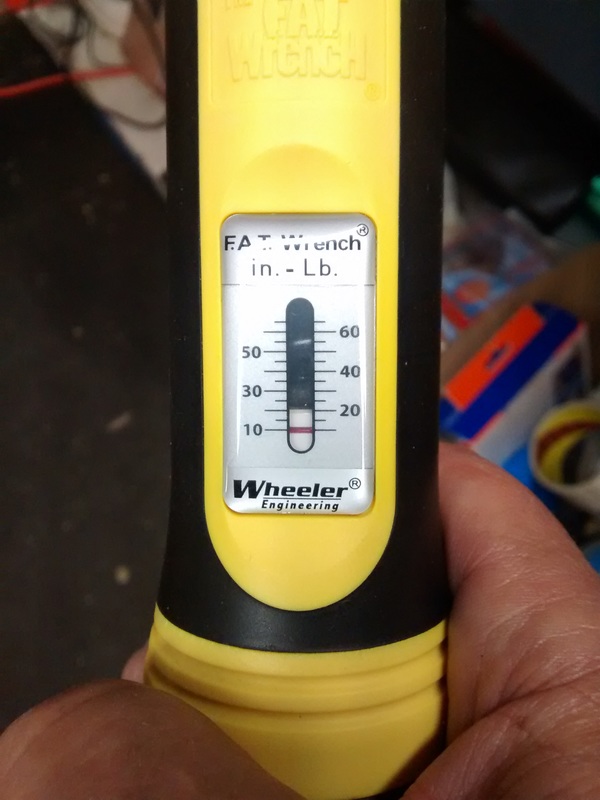
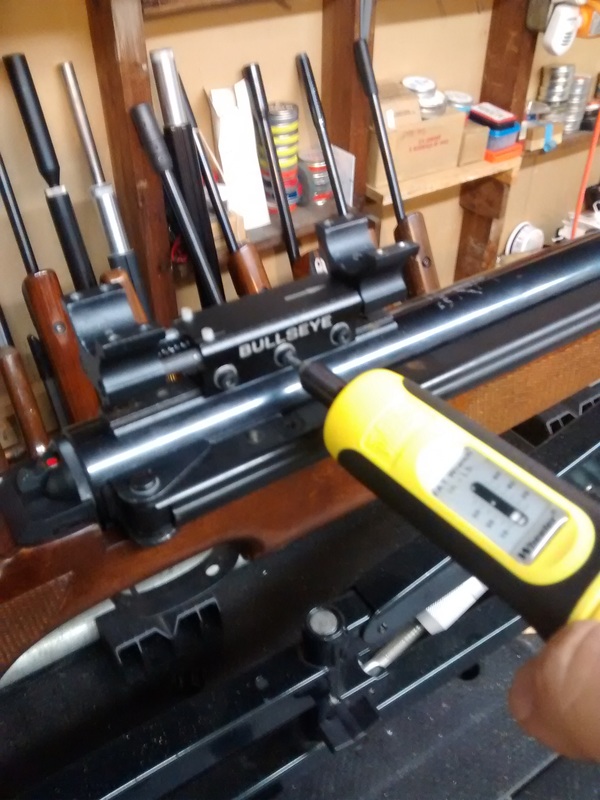
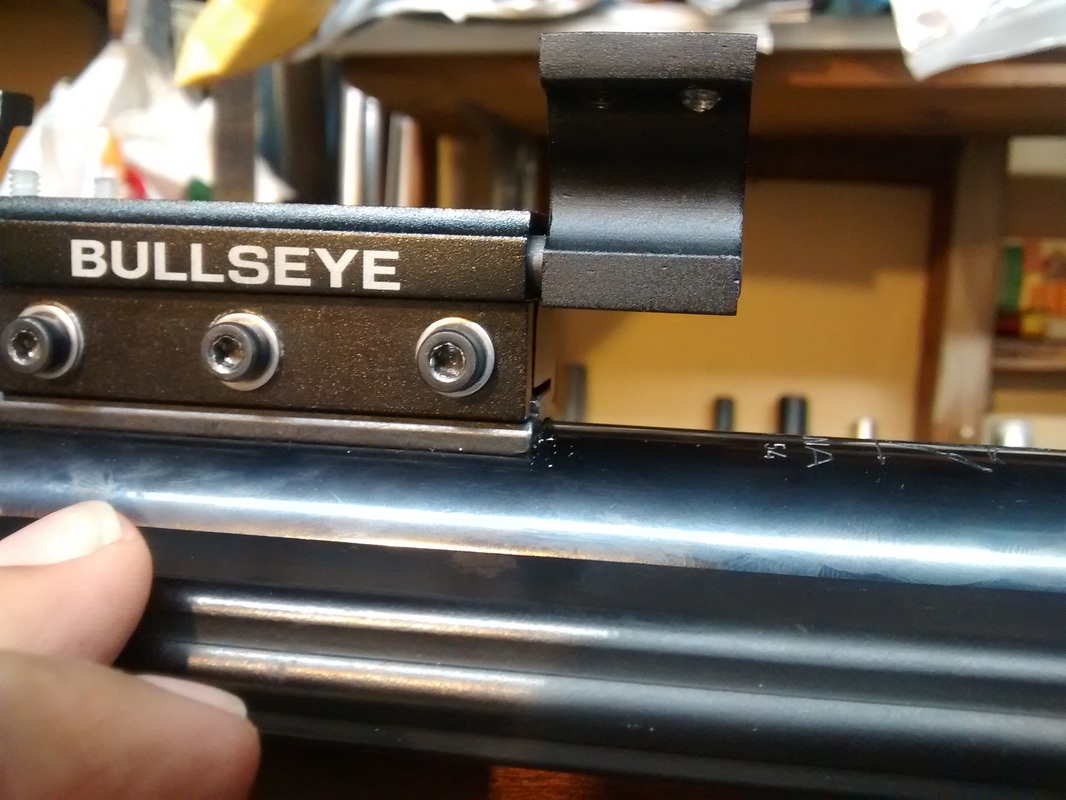
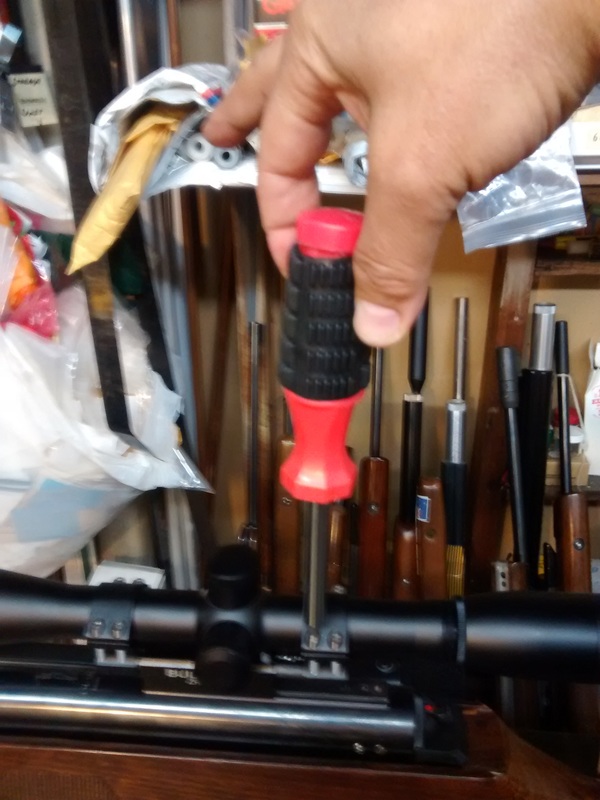
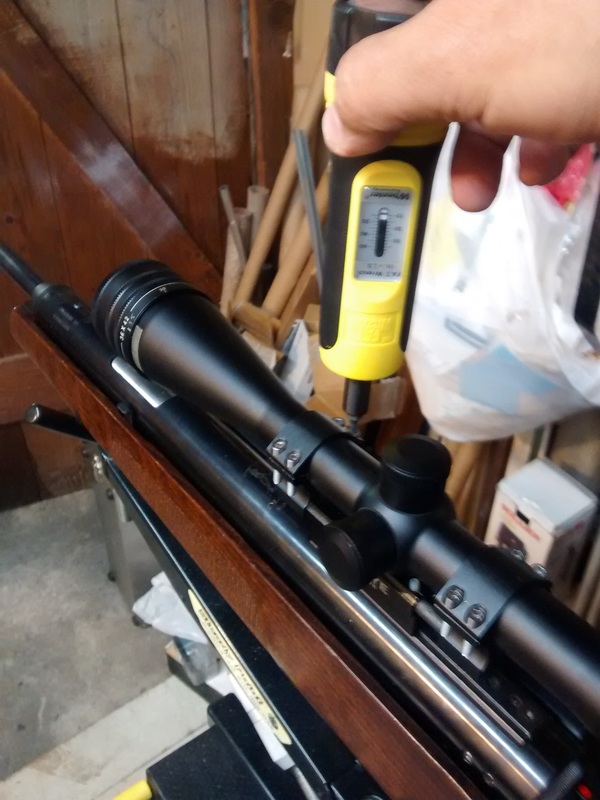
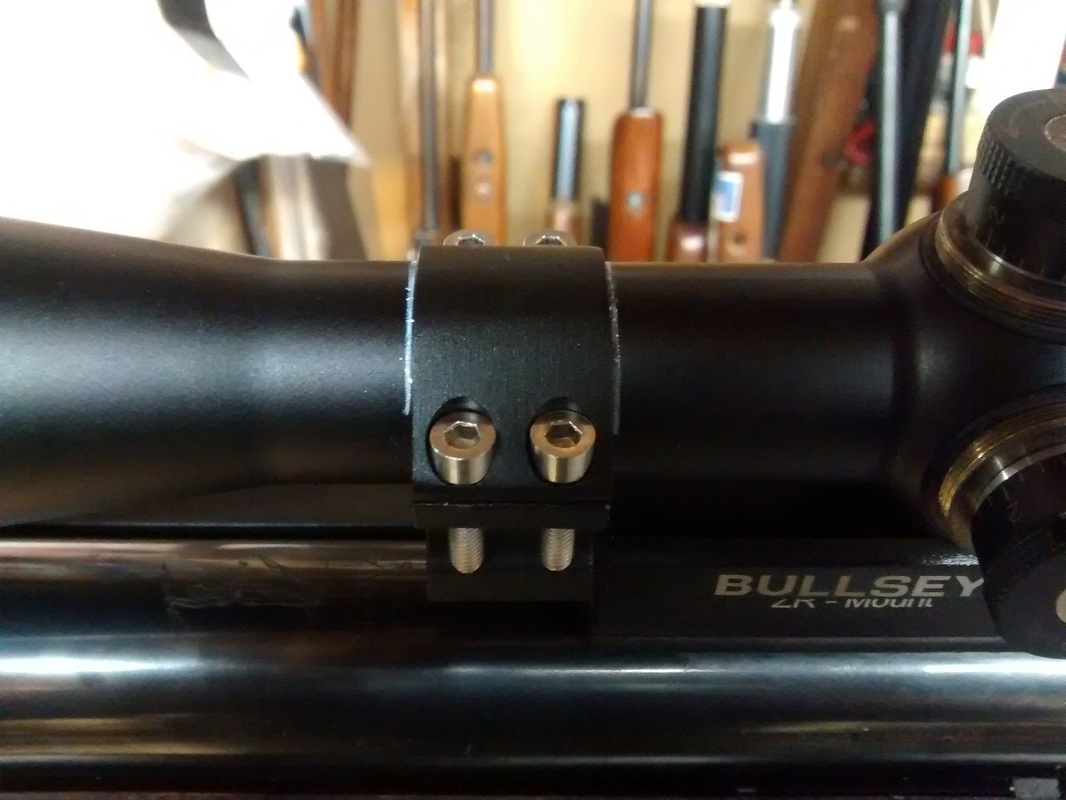
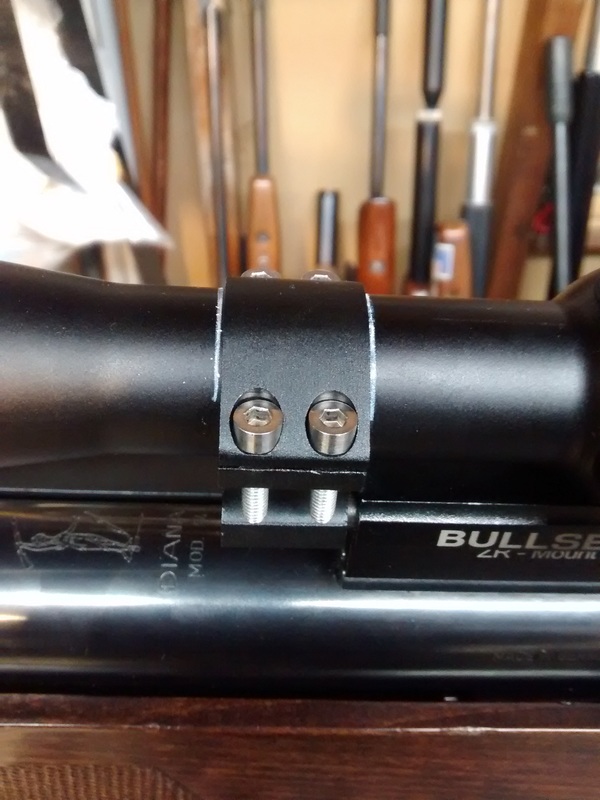
 RSS Feed
RSS Feed